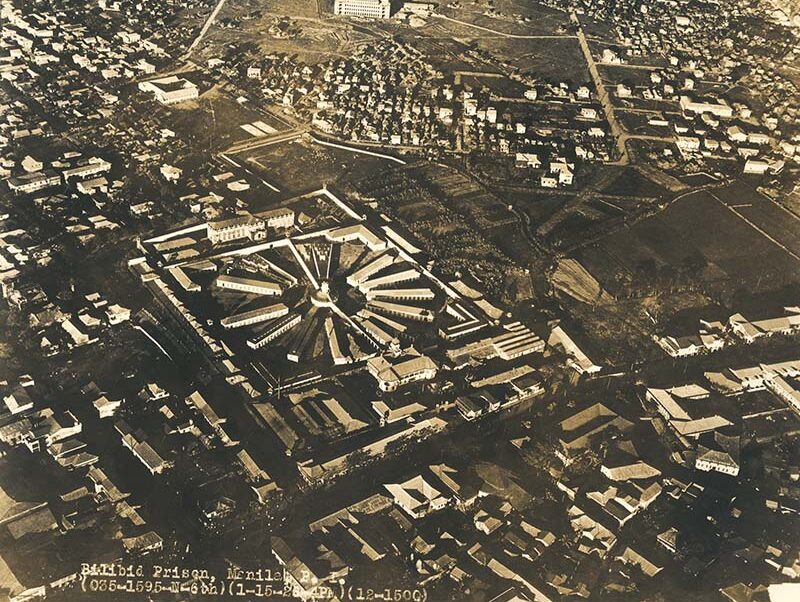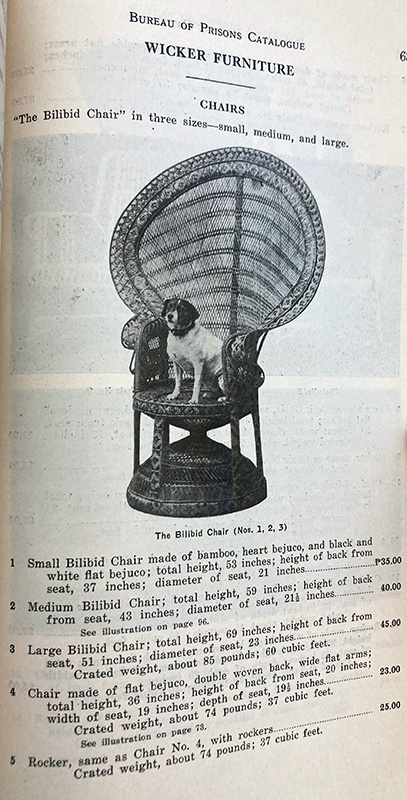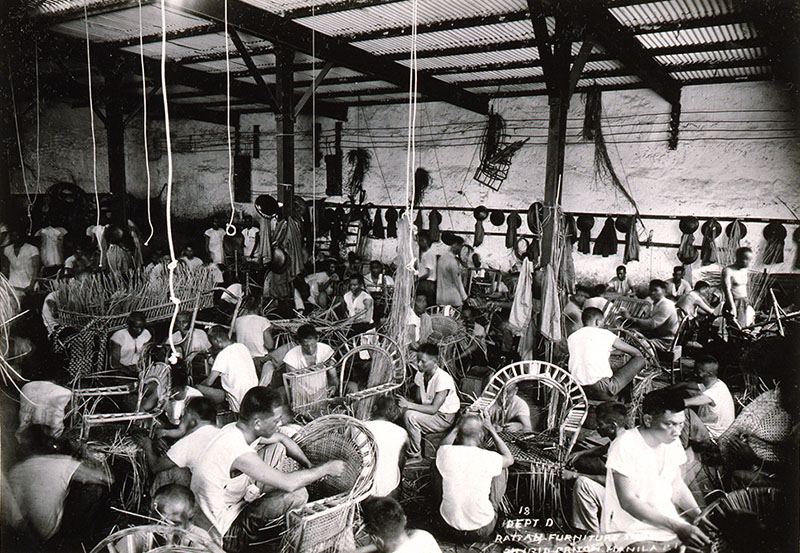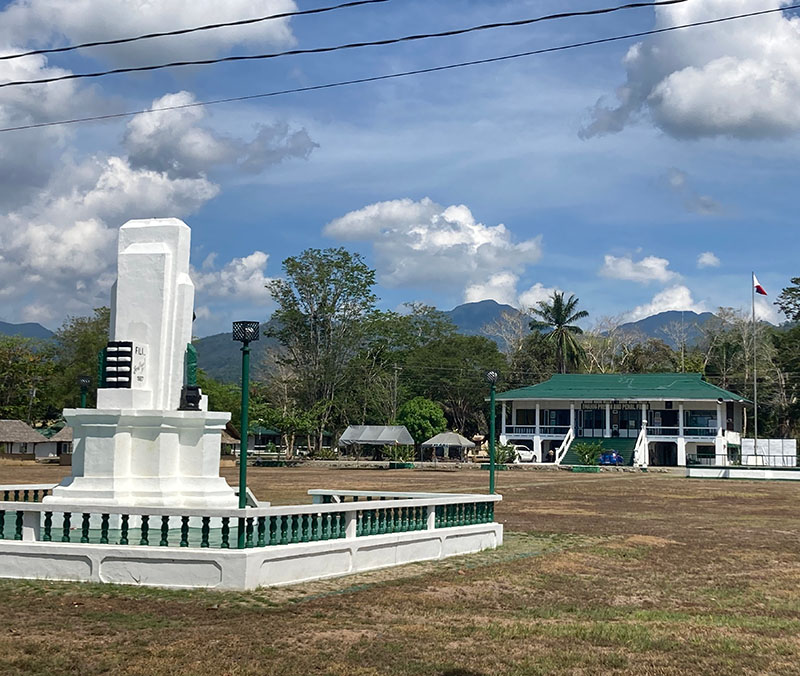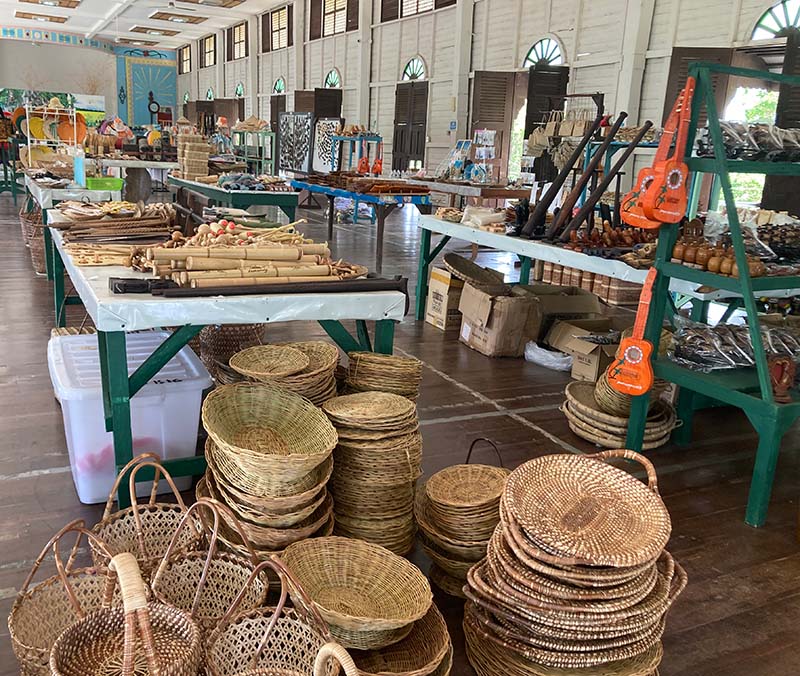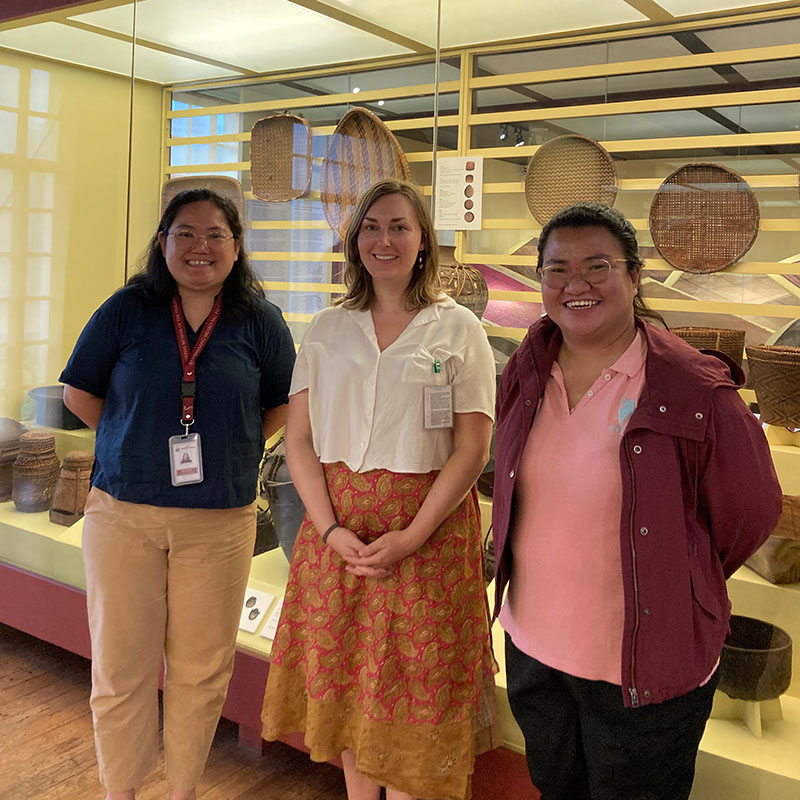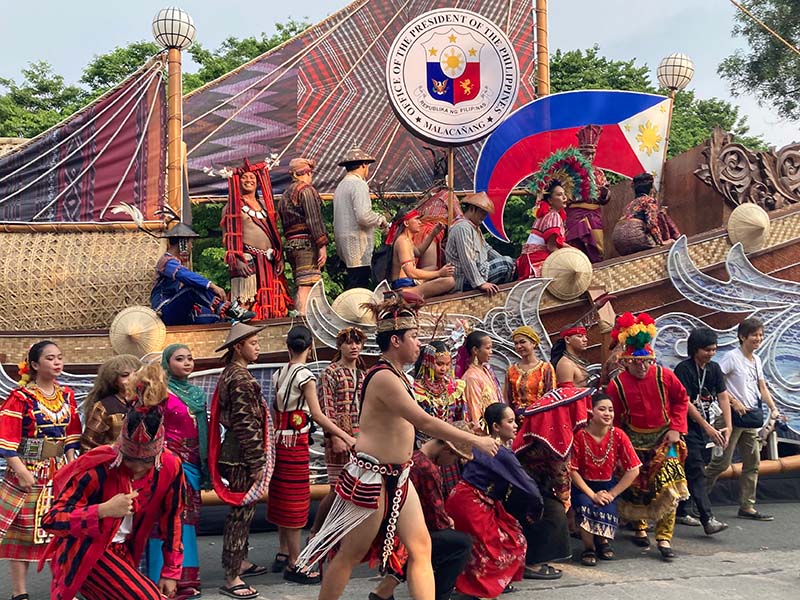Prison Wicker: Woven Legacies of U.S. Empire in the Philippines
by Ashley E. Williams
This summer, I was supported by a Decorative Arts Trust Research Grant as I completed a month-long trip to the Philippines to conduct research for my dissertation, “Unfree Artists on the Borders of U.S. Empire, 1850–1930.” This dissertation unearths new connections between systems of artistic labor in enslavement, wartime imprisonment, and incarceration. I am particularly interested in the ways that unfree makers navigated these systems, which were foundational in the expansion of U.S. territory. During my time in the Philippines, I conducted fieldwork for a chapter about colonial prison craft, focusing on the rattan and bamboo furniture workshop at Bilibid Prison in Manila, which was run by the U.S. government from roughly 1904 to 1940 (figure 1). Bilibid furniture became world-famous, and the iconic Peacock Chair (then known as the Bilibid Chair) was one of the prison’s most popular exports (figure 2).
Through the Decorative Arts Trust Research Grant, I was able to build first-hand knowledge, experience, and relationships that will prove invaluable as I move forward with my dissertation project.
Ashley E. Williams is a PhD Candidate at Columbia University.
1. Wicker refers to a range of weaving techniques done with grass fiber materials, including: reed, rush, seagrass, willow, cane, rattan, bamboo, and more.
About The Decorative Arts Trust Bulletin
Formerly known as the "blog,” the Bulletin features new research and scholarship, travelogues, book reviews, and museum and gallery exhibitions. The Bulletin complements The Magazine of the Decorative Arts Trust, our biannual members publication.
Click Images to Enlarge
Did you know that clicking on the images in Bulletin posts will allow you to get a closer look? Simply click on an image, and a larger version will open in a pop-up window.








